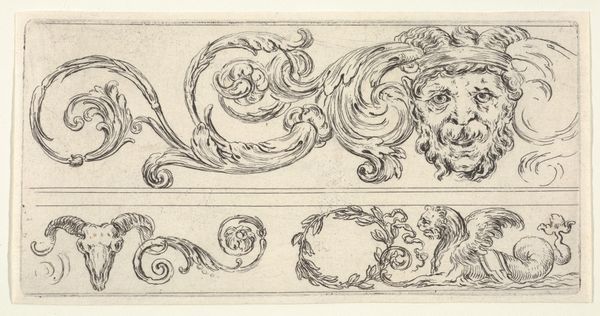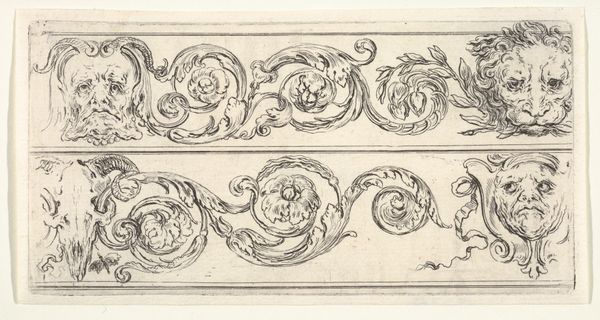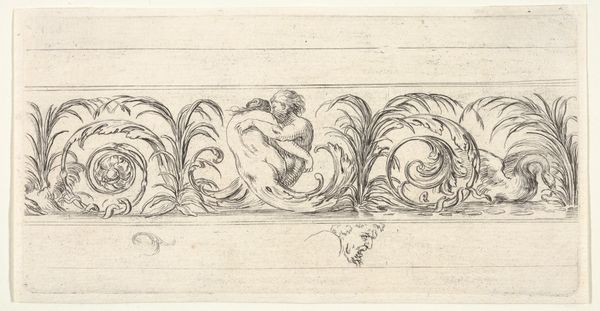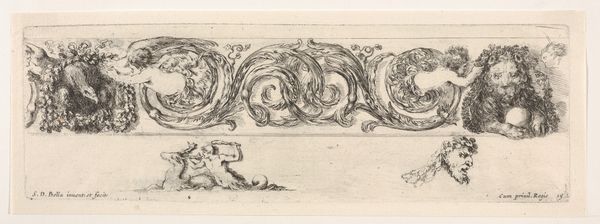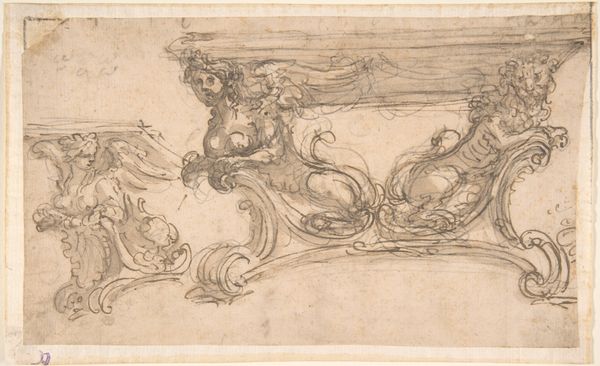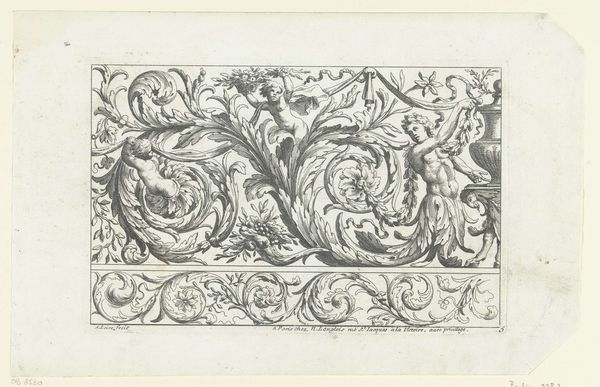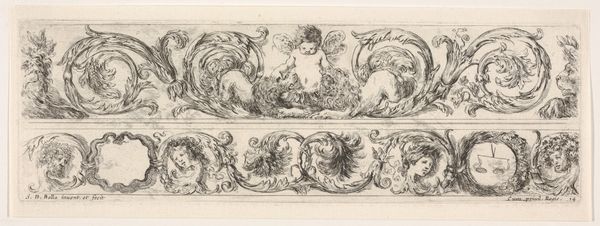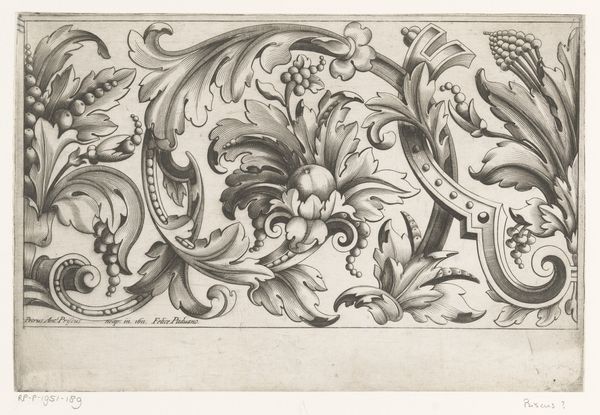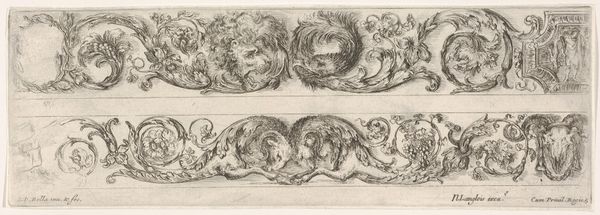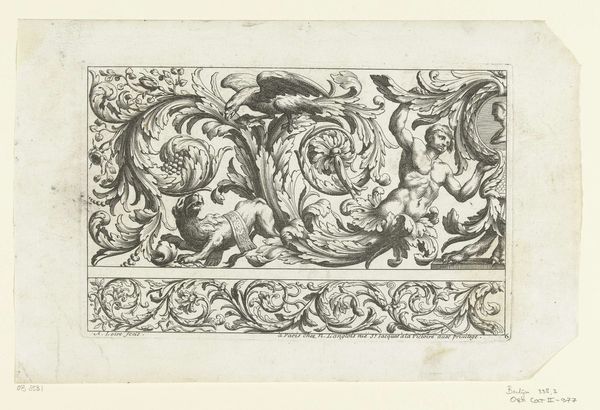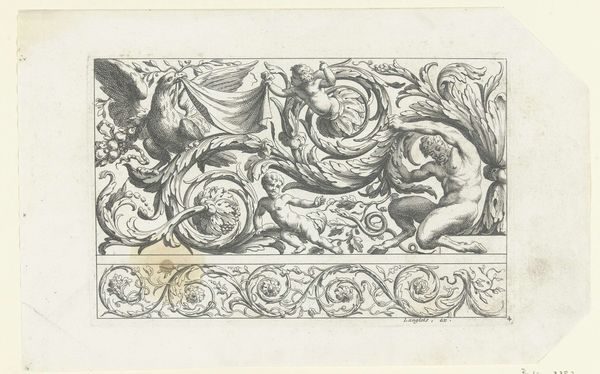
Plate 7: two friezes; at top, an eagle and the head of a lion, at bottom, a lion head and two grotesque heads of men, from 'Friezes, foliage, and grotesques' (Frises, feuillages et grotesques) 1638 - 1643
0:00
0:00
drawing, print, metal, etching, engraving
#
drawing
#
baroque
#
pen drawing
# print
#
metal
#
etching
#
line
#
engraving
Dimensions: Sheet: 2 1/2 × 4 15/16 in. (6.4 × 12.5 cm)
Copyright: Public Domain
Curator: This intricate engraving, crafted by Stefano della Bella between 1638 and 1643, is entitled 'Plate 7: two friezes; at top, an eagle and the head of a lion, at bottom, a lion head and two grotesque heads of men, from 'Friezes, foliage, and grotesques.' Editor: It strikes me as both whimsical and slightly menacing. The grotesque heads in particular have a wonderfully unsettling quality. Curator: Absolutely. The print is comprised of etching, engraving and metal, processes that are often considered reproductive, but were, in fact, highly skilled trades during the Baroque era. Notice how the fine lines create a sense of depth and texture. The deliberate mark making shapes both the ornamentation and figures portrayed here. Editor: It's interesting to consider these grotesque figures in the context of the period. Could they represent the anxieties of a society grappling with shifting power dynamics? Are they perhaps a commentary on the perceived "grotesqueness" of marginalized communities? Curator: That’s a compelling perspective. I'd argue it is essential to consider their presence in light of artisanal craft: were these prints intended for practical applications, like decorating furniture or interiors? Were they considered high art at all? These considerations inform their interpretation. Editor: True. Perhaps it blurs those very boundaries— high art, low craft— particularly given the social role of artists and artisans at the time. Who had access to this art? How did it shape or reflect cultural beliefs? Curator: Exactly! It also draws attention to the economics of printmaking and circulation. This image and its frieze design could have easily inspired or have been inspired by work for interior and exterior decor or surface pattern for ceramics. Editor: Considering all of this makes one really consider the intersection of class, consumption and representation in shaping our visual culture. It offers up really complex layers of analysis, even within these two seemingly ornamental rows of decoration. Curator: Absolutely. It reveals a whole network of makers, distributors, and users. Thanks for highlighting that socio-political element that may often be overlooked in studying 'Friezes, foliage, and grotesques.' Editor: And thank you for spotlighting how essential process is in this art object!
Comments
No comments
Be the first to comment and join the conversation on the ultimate creative platform.
